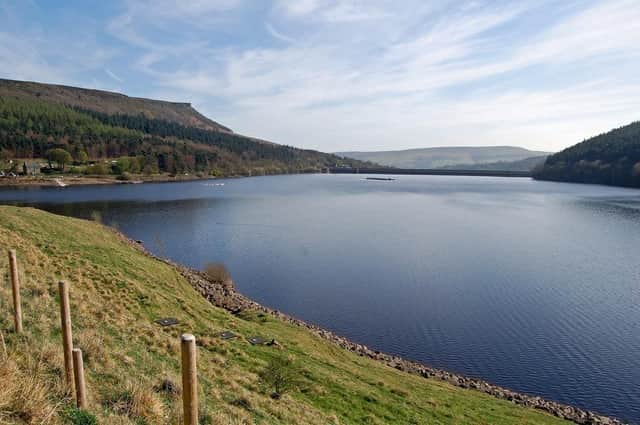Things to do in Derbyshire: Picturesque reservoir that hides the remains of a submerged Peak District village


With temperatures expected to creep up in the coming weeks, enjoying the sunshine and catching some rays is probably on your list of things to do.
Ladybower Reservoir is an ideal place to be outdoors, with its sweeping views and unique construction that gives it a distinctive Y-shape.
Advertisement
Hide AdAdvertisement
Hide AdBeing one of the top-rated tourist attractions in Derbyshire is just a bonus.
Here is everything you need to know about Ladybower Reservoir, including a little bit of history, how to get there, and what people are saying about it.
What is Ladybower Reservoir?
Ladybower Reservoir lies in the upper Derwent Valley, Derbyshire.
It is the largest reservoir in the Peak District National Park.
The remarkable Y-shaped reservoir offers stunning views across the water making it a popular tourist destination in all seasons.
Ladybower Reservoir history
The reservoir was built between 1935 and 1943.
Advertisement
Hide AdAdvertisement
Hide AdIt was officially opened by King George VI several years later on September 24, 1945.
Little-known facts about Ladybower Reservoir
1. Two giant plugholes drain surplus water to prevent damage to the dam.
2. Three linked reservoirs of Ladybower, Howden and Derwent span a whopping 210 hectares to give the largest expanse of water in the Peak District.
3. At times of extreme drought, remains of submerged Ashopton village can be viewed near the concrete A57 road bridge.
Ladybower Reservoir reviews
‘Lovely walk’
Giving it a top TripAdvisor rating, Adrian S said: ‘Lovely woodland walks beside the reservoir, with plenty of ever-changing views and easy walking. Our dog loved it too.’
‘Impressive’
Another fan going by username Cickany wrote: ‘It offers a great mix of natural beauty and easy walking paths. It's peaceful, without too many crowds, making it ideal for a relaxed outing. The "plug" itself is particularly impressive and well-deserving of your time. If you're seeking a serene getaway with natural allure, this is a great option.’
‘Peaceful and unspoilt’
Advertisement
Hide AdAdvertisement
Hide AdSarah Robey appreciates the reservoir’s serenity. She said: ‘It is so beautiful and peaceful once away from the main road. It is very unspoilt and well maintained, clear paths marking the trails. I would thoroughly recommend visiting this place, such a tranquil setting and lovely place to explore.’
‘Absolutely brilliant’
Rondho said the reservoir is ‘absolutely brilliant for a good walk’ whilst Graham D named it ‘cycling heaven.’
How to get to Ladybower Reservoir
The address for Ladybower Reservoir is: Heatherdene, Bamford, Derbyshire.
The reservoir spans a large area with multiple postcodes, one of the most common is S33 0AQ.
Ladybower Reservoir walking route
If it’s your first time at the reservoir, you may want to stick to a tried and tested route.
A detailed walking route can be found by clicking here.
Where to park at Ladybower Reservoir?
There are two main car parks, here are their addresses.
- Fairholmes Car Park, Fairholmes, Bamford, Hope Valley S33 0AQ
- Heatherdene Car Park, A6013, Hope Valley S33 0BY
Free parking options nearby include along Snake Road and near the Visitor Centre.
Advertisement
Hide AdAdvertisement
Hide AdA point to note there is one visitor centre sometimes known as either Fairholmes Visitor Centre or Derwent Visitor Centre.
It is located two miles from A57 Snake Road, where parking is also available.
The address for the visitor centre is Fairholmes, Bamford, Hope Valley S33 0AQ
To plan your visit and for more information about Ladybower Reservoir visit the centre’s website by clicking here.
Comment Guidelines
National World encourages reader discussion on our stories. User feedback, insights and back-and-forth exchanges add a rich layer of context to reporting. Please review our Community Guidelines before commenting.
